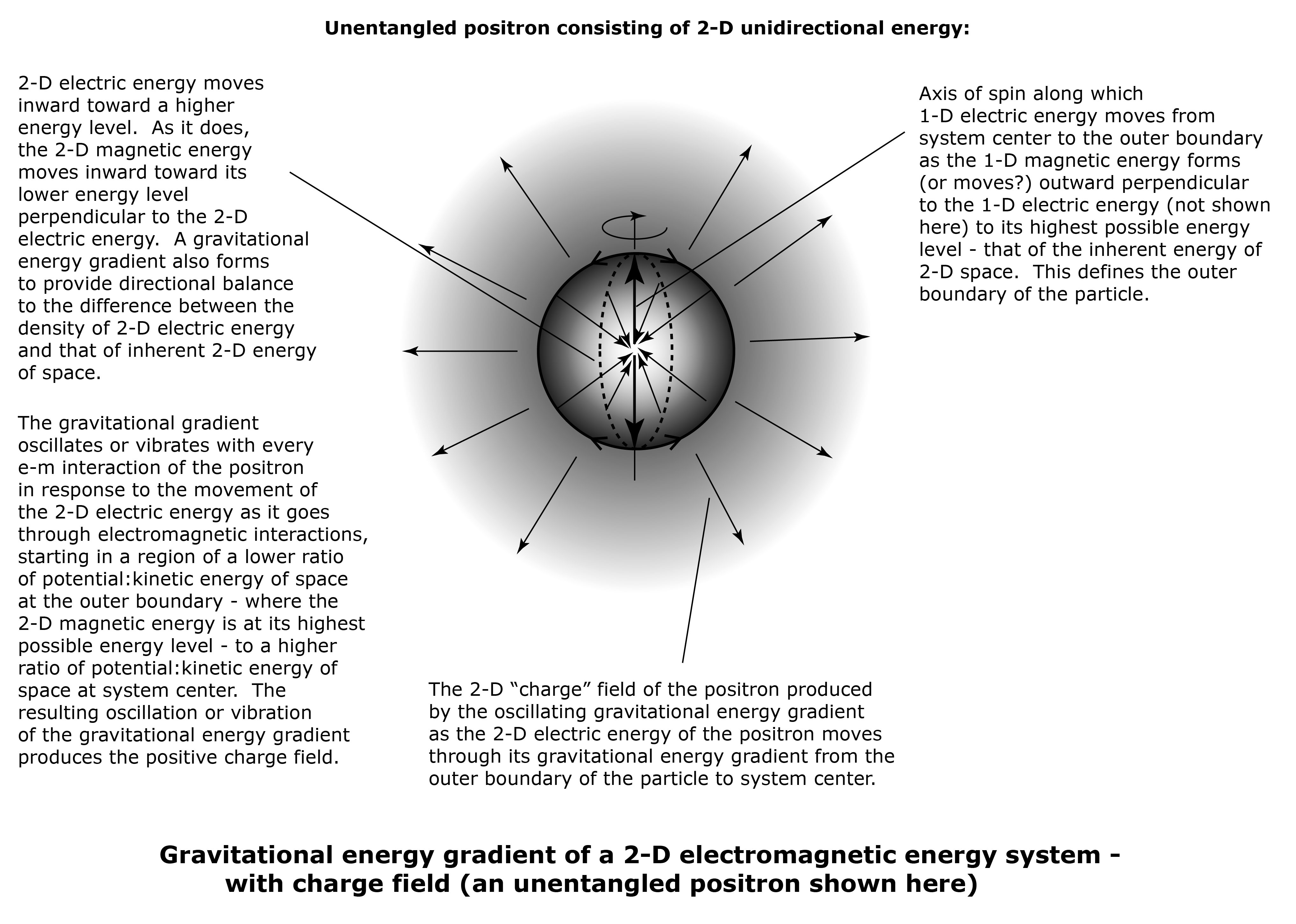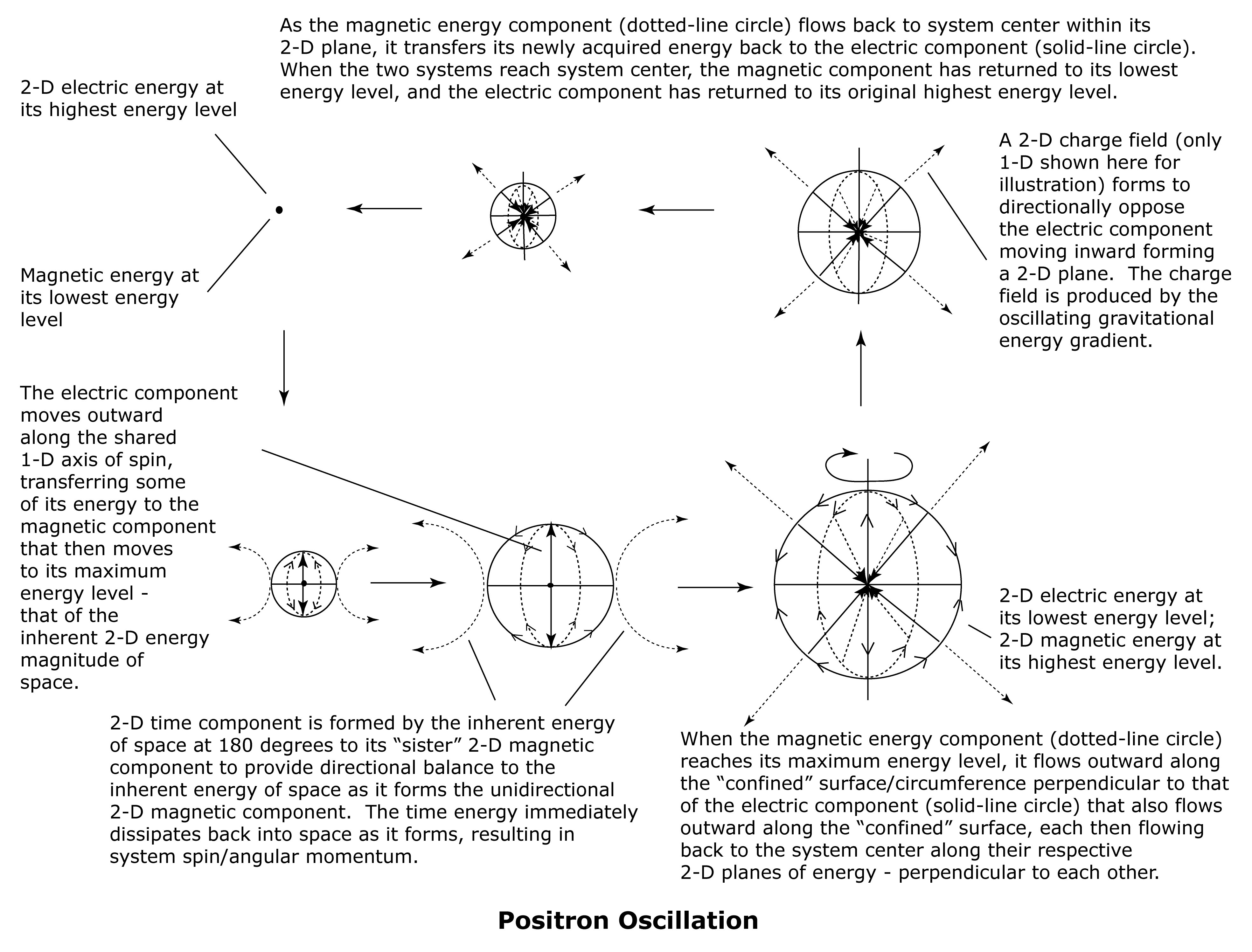 A positron consists of 1-D electric energy moving outward from system center toward a lower energy, and ab opposing 1-D/2-D magnetic energy along a circular circumference perpendicular to the 1-D electric energy formed by the inherent energy of space. This magnetic energy provides directional balance to the electric energy to maintain the directional balance of the inherent energy of adjacent space.
A positron consists of 1-D electric energy moving outward from system center toward a lower energy, and ab opposing 1-D/2-D magnetic energy along a circular circumference perpendicular to the 1-D electric energy formed by the inherent energy of space. This magnetic energy provides directional balance to the electric energy to maintain the directional balance of the inherent energy of adjacent space.
Once the 2-D magnetic energy reaches its maximum energy level – the inherent energy magnitude of 2-D space – then it can proceed no further, and moves outward along the 1-D/2-D circumference at right angles to the electric energy. The 2-D electric energy now returns to its original higher energy level (higher energy density) at system center. The electric energy returns as 2-D electric energy converging back to system center, passing through its gravitational energy gradient from a lower ratio of potential:kinetic energy at outer boundary to a higher ratio of potential:kinetic energy at system center. This causes the 2-D gravitational energy gradient to oscillate, or vibrate, producing a positive charge field. The process then repeats itself.
Because the 2-D electric energy moves toward a higher energy level, this is analogous to a river flowing up hill, so the positron represents a higher energy level structure than that of an electron.
Since an unentangled, charged positron structure represents a higher energy level (than that of an unentangled, charged electron with its 2-D energy moving toward a lower energy level), it is likely that positrons only exist as entangled particles or in conjunction with some other energy that provides its structure directional balance.
Spin.
‘Spin’ is a quantum property that is most likely due to the property differences between the 2-D electric energy and its corresponding 1-D electric energy (along the system axis of spin).
Formation of a charge field
In the case of an non-entangled, or isolated, positron, its 2-D electric energy moves inward to system center toward a higher energy level. As it moves inward, it pulls away from the inherent energy of 2-D space, resulting in lower pressure at the boundary. The energy density of the 2-D positron relative to that of the inherent energy of 2-D space is directionally balanced by the formation of a 2-D gravitational energy gradient through an increasing ratio of potential:kinetic energy of space inward toward system center.
As the 2-D electric energy of a positron moves inward to system center, it moves from a region of lower ratio of potential:kinetic energy of space at the outer boundary of the particle to a higher ratio of potential:kinetic energy of space at system center.
The direction of movement of the 2-D electric energy is opposite for the electron and the positron so the oscillation or vibration of their gravitational energy gradients are also in the opposite direction. In the case of an electron, the oscillation of its gravitational energy gradient moving outward from system center produces a negative charge field. For a positron, the oscillation of its gravitational energy gradient moving inward to system center produces a positive charge field.

